- General Scenario and Current Trend :Jharkhand is categorized as plateau region having red laterite soil. Total cultivable area of the state is 38 lakh ha out of which Net Sown Area is only 22.38 lakh ha. Current fallow, other fallow and cultivable wasteland is 18.35 lakh ha. The state has varied climatic regions: up land, low land and plain land. 1/3rd of the total geographical area is forest and is rich in mines of industrial importance. Paddy, maize, pulses, sunflower, groundnut and fruits are main agriculture produce. There is opportunity to bring more land under agriculture in the state as current fallow, other fallow and cultivable wasteland constitutes 18.35 lakh hectares.
Average annual rainfall in Jharkhand is 1400 mm and only 12% of the cultivable area is irrigated. Most of the rain water is lost as run off losses. Since the state receives a reasonable amount of rainfall and has undulating topography, there are opportunities to arrest runoff losses by creating water retention structures. This will not only check erosion of surface soil leading to siltation of the dams/water reservoirs but will also increase irrigation potential and increase sub-surface moisture, which is so essential for good agriculture in the state.
Soil structure is poor with low fertility. Almost 90% of the soils are acidic and deficiencies of zinc, molybdenum and boron are prevalent.
In 2008-09, SRR under rice is 16%, maize 12%, Pulses 13% and about 30% for pulses. State has established 21 seed villages and 22 KVKs. Current trend shows below national level production and SRR.
Productivity of rice is 1950 kg/ha and that for food grain it is 43.10 lakh MT.
37000 ha area is under fruit cultivation and 2.38 lakh ha area is under vegetable cultivation. 3% of total vegetable production of the country comes from the state. Agriculture and allied sector contributes 14% to the GSDP.
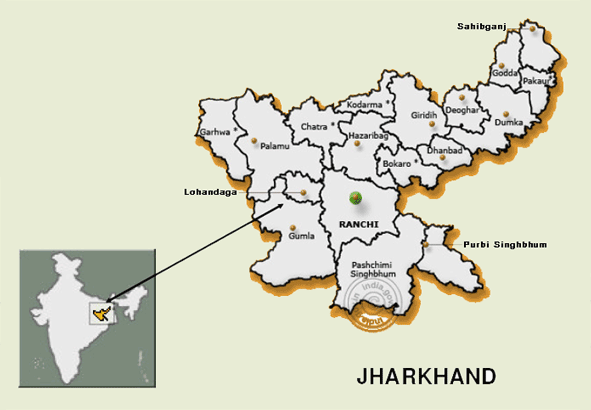
-
Strength: Varied climatic regions, rich in mines, adequate rains.
-
Limitation: Poor soil condition, low SRR and VRR, inadequate irrigation facility, rain water run off losses, huge fallow and waste land, poor extension and farm mechanization set up, mono cropping, low farm credit and insurance, vacancy of 2/3rd posts in agriculture and allied sectors departments, low utilizations of funds, inadequate distribution of farm land and poor infrastructure are a few illustrative limitations which are affecting the production, productivity and development of agriculture and allied sector of the State.
- Public Investment : The state has tried to make a few interventions through Centrally Sponsored
Schemes as well as through satisfactory allocation under Agricultural Sector from the State Plan for increasing
production and productivity. In 2005-06, out of Rs.4079.13 cr State Plan, agricultural sector allocation was
Rs.203.34 cr. (4.98%). Out of Rs.3808.87 cr State Plan of 2006-07, agricultural sector received Rs.119.70
cr. (3.14%). A sum of Rs.336.29 cr. (5.89%) was allocated in 2007-08 out of Rs.5706.35 cr. State Plan and
in 2008-09 agriculture sector received Rs.381.97 cr. (4.87%) out of Rs.7843.75 cr. State Plan of Jharkhand.
During 2007-08, Government of India provided Rs.61.66 cr. under RKVY, Rs.25.54 cr under MM, Rs.5.57 cr under Extension Reforms, Rs.7.81cr under NHM and during 2008-09, Rs.58.62 cr was allocated to Jharkhand under RKVY, Rs.98.72 cr under NHM, Rs.10.65 cr under MMA.
During 2008-09, state could not get the full allocated amount due to low utilization of funds.
In last two years of the 11th Plan Period, Rs.900 cr has been spent in the agriculture and allied sector in the state.
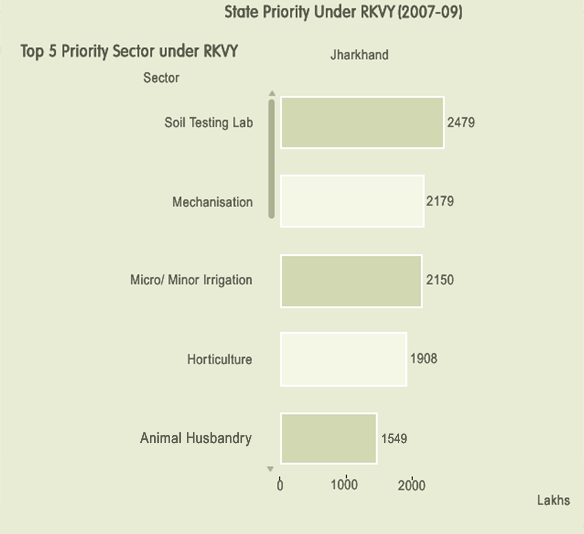
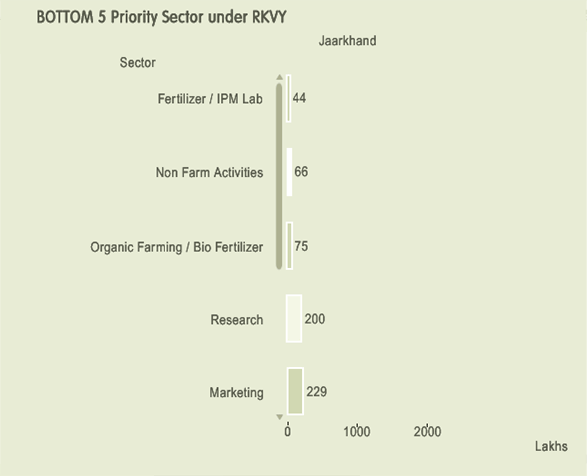
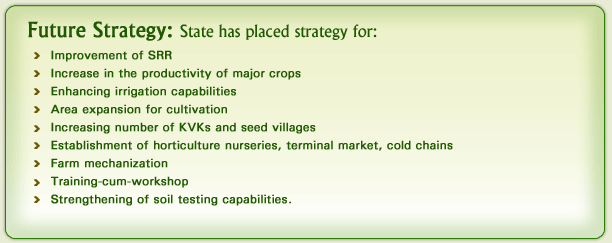
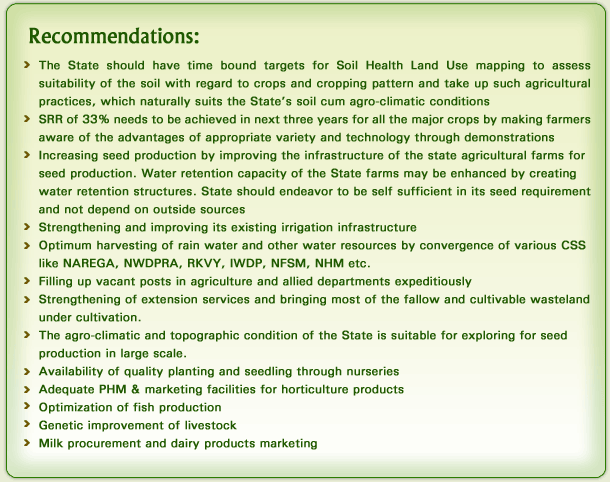
STATE HAS AGREED TO PREPARE TIME BOUND ACTION PLAN FOR THE STRATEGY AND RECOMMENDATION..